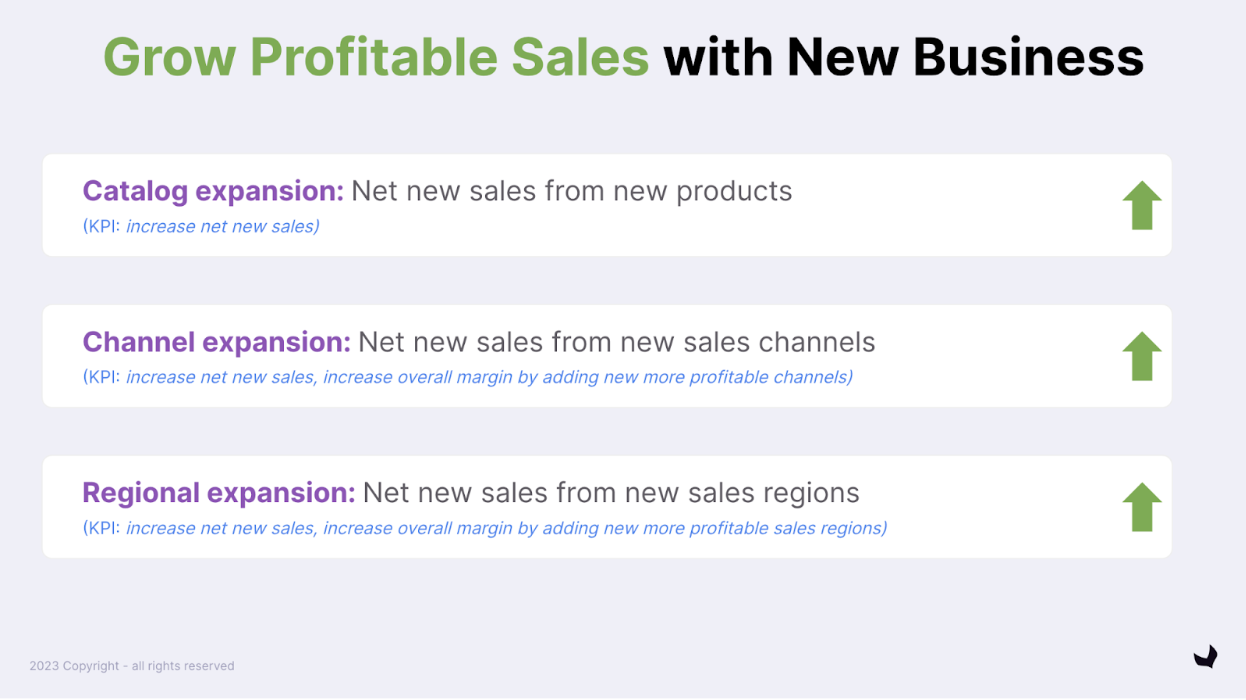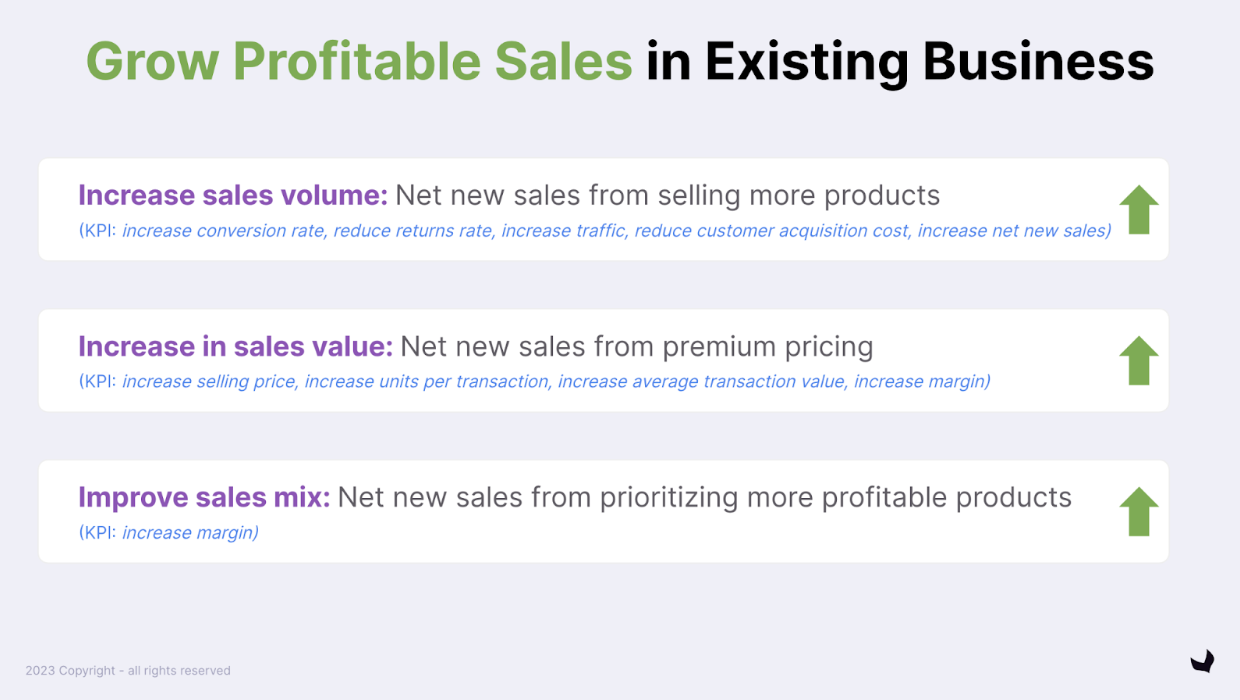Unleash the potential of your business with a Product Experience (PX) Strategy. Elevate customer engagement and drive profitable sales across new and existing ventures. Discover how a well-implemented PX Strategy can optimize onboarding, boost sales volume and value, and empower internal channels for sustained growth.

Keywords
It’s critical to first identify the opportunities within your business to use product experiences to improve sales. Below we’ve broken down the different ways that a PX Strategy can help increase profitable sales and the key performance indicators (KPIs) you can use to track them.
It’s important to remember here that each business and industry is unique, so what works for one organization might not be relevant for another. While reading through this article, feel free to identify the opportunities that apply to your business and incorporate them into your own strategy.
A PX Strategy helps grow profitable sales by supporting new business.
A faster, more efficient way of onboarding, enriching, and activating products on sales channels means doing more with less, allowing you to focus on expanding the product catalog to drive new revenue. This benefit is especially impactful for organizations with large catalogs that haven’t been fully digitized.
Quickly expand and sell in new sales channels, regions, and languages. A PX Strategy involves building a single source of truth for product information that provides a scalable way to adapt, translate, and launch products in new markets. Many technology solutions like PIM, DAM, Syndication, and Translation tools also include pre-built integrations that further ease this process.

A PX Strategy helps grow profitable sales by improving existing business.
Improve sales by providing customers with Product Experiences that are compelling, accurate, and more search friendly to increase traffic, conversions and reduce returns.
Charge premium prices by emphasizing the value of your brand and products, promoting product benefits and sustainability, and presenting customers with compatible products or service and offerings to increase upsell and cross-sell.
Identify and prioritize the products that are driving profit within your organization by using product-focused analytics and insights. Analytics can also help you accurately forecast inventory based on demand, gain an understanding of why a product is failing to sell, and take measures to correct it.

A Product Experience Strategy also means enabling internal channels like customer support and sales teams. Empowering these teams with complete, high-quality product information helps them present consistent information about the products you sell to customers in order to generate new sales opportunities. This could mean empowering a customer support team to cross-sell and service warranties, or giving the sales team critical compatibility information about a product to sell lucrative add-on services or custom packages.
A Product Experience Strategy offers a transformative path to elevate customer engagement across the buying lifecycle. The ripple effects of an improved purchasing experience helps generate more profitable sales from both new and existing business. Don’t overlook the strategic value of product experiences by constraining it to just data management – instead, recognize it as an important driver of sustainable growth and enduring customer relationships within your organization.

Explore how these 2025 Experience Award winners elevated product experiences by centralizing data, automating workflows, scaling globally, and...
Read more
Welcome to the digital shelf: the online space where products are discovered, evaluated, and purchased. Whether you’re aiming to boost visibility,...
Read more
As more brands are transitioning to Digital Product Passports (DPP), there are crucial steps that need to be taken to ensure that brands are...
Read more